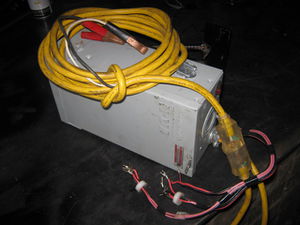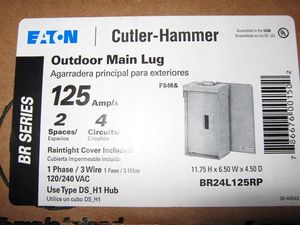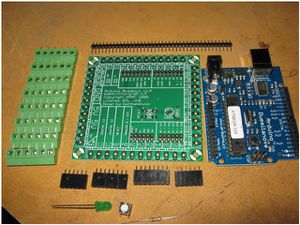CEB Press/Manufacturing Instructions/Controller Box: Difference between revisions
Jump to navigation
Jump to search
William Neal (talk | contribs) No edit summary |
William Neal (talk | contribs) No edit summary |
||
| Line 75: | Line 75: | ||
# Select the Appropriate Serial Connection under Tools / Serial Ports. | # Select the Appropriate Serial Connection under Tools / Serial Ports. | ||
# Open the CEB Testing Program in the Arduino program | # Open the CEB Testing Program in the Arduino program | ||
<html><iframe src="https://docs.google.com/document/pub?id=1gmFD7XUEu_XSkD7l7rwHhxQQnZCSyXnA-z09pkU1Z0A&embedded=true"></iframe></html> | |||
# Load the CEB Testing Program into the Arduino using the Upload Button | # Load the CEB Testing Program into the Arduino using the Upload Button | ||
# Open the Python-based Arduino Testing Program | # Open the Python-based <html><a href = "https://docs.google.com/uc?id=0B2ZOu2AF-TF5OWM1ZGQ1OTAtNzU1ZS00M2EzLTk3ZjEtYjY1YmJkN2RmODM2&export=download&hl=en_US">Arduino Testing Program</a> | ||
# Connect to the Arduino using the GUI button | # Connect to the Arduino using the GUI button | ||
Revision as of 00:41, 10 August 2011
Tools Required
- Wire Cutters
- Soldering Iron Kit
- PC
- Hand Drill
- Wire Crimper Cutter
Materials Required
- Outdoor Main Lug Box - 125Amp, 2Spaces, 4Circuits, 1Phase, 3Wire, 120/240VAC
- Extension Cord
- Alligator clips (2)
- Home wiring box [1]
- Fuse holder - 30Amp Inline Mini Blade-Type Buy
- 12v quick connect plugs (5 pairs)
- Stranded 5A wire ?
- Spade terminals (10)
- Underground phone cable
- Potting compound Buy
- PVC pipe
- PVC pipe cap
- Stranded Cat 5 cable
- Supermagnets (6) - N42 Buy
- Arduino (Duemilanove) Buy
- MOSFET replacements (5) - Single 35A 70V 0.028Ω TO-220-3 Buy Buy
- Hall Effect sensors (2) - US1881 TO-92 Buy
- 3/8" V-groove bearings (4) Buy
- Molex connector Buy Buy Buy
Sub-project Materials
- Arduino breakout shield Buy Parts Assembly instructions
- PWM Solenoid drivers (2) Buy Parts Assembly instructions
Diagrams
- need a diagram of the wires
- google doc drawing of wire diagram (working on it)
Fabrication Steps
- Assemble entire Control Box
- Blue spacer box - Arduino attached on top with 2 small screws. Slightly slanted attachment to make screw holes fit on blue spacer box
- Terminal in electrical outlet box cut in half on metal cutoff saw to create + and - terminals
- Plastic mount on bottom of electrical box was shaved to allow 2 solenoid drivers to fit
Test
- Arduino Testing - Preparation
- Note: For this testing procedure, you will need a computer with Arduino software, Python and pyserial loaded.
- Solder 100 Ohm resistors to the negative (short) ends of three LEDs.
- Connect the Positive ends of the LEDs to Ports 11, 12 and 13 of the Breakout Shield
- Connect the resistor ends to GND port of the Breakout Shield
- Double-check the connections!
- Connect the Arduino to the Computer using a USB Cable
- Open the Arduino Program
- Select the Appropriate Serial Connection under Tools / Serial Ports.
- Open the CEB Testing Program in the Arduino program
- Load the CEB Testing Program into the Arduino using the Upload Button
- Open the Python-based Arduino Testing Program
# Connect to the Arduino using the GUI button
* Arduino - Testing
# Click the Blink Test Button to Check if the Arduino is working. LED 13 should blink on and off.
# Click the Sensor Test Button. The Arduino’s sensors should cause LEDs 11, 12 and 13 to blink on and off in the presence of the magnets.
# Click the MOSFET Testing Buttons. The green LEDs on the MOSFET should blink on and off accordingly.
* Solenoid Connections
# Cut five 2’ pieces of 16-gauge black wire and five 2’ pieces of 16-gauge red wire.
# Strip ¼” off each of the five black and five red wires.
# Tin the ends of each of the wires.
# Attach black wires to each of the negative terminals of the MOSFET connectors on the Detroit Fab-Lab board.
# Attach red wires to each of the positive terminals of the MOSFET connectors on the Detroit Fab-Lab Board.
# Run the black and red wires through an available hole in the Electronics Box.(Should we use the left-side hole for this???)
# When all wires have been checked, tighten each of the cable clamps.
* Solenoid Testing
# Remove the bridge connector between the Common Ports of each solenoid unit.
# Connect each of the five red-black solenoid wire pairs to terminals in the solenoids. Black wires should attach to the Common ports and Red Wires to the Solenoid a and Solenoid b Ports
# Double-check the connections!
# Test the Solenoids with the Python-based CEB Press Testing program.
Previous Testing Procedure
- Test Arduino on laptop - for example by blinking Channel 13 output on Duemilanove.
- Test sensors by passing magnets over them. See this sample code.
- Data Sheet
- Supply voltage is 5V from the Arduino breakout shield
- The pins are +,-, OUT reading from top (printed / smaller face)
- The output is "Open Drain" - this means you need a "pull up" resistor on the output (10K connected to +)
- This model is "latching" which means it turns on from one pole, and off by the other, remembering its state in the meantime.
Controller checklist (ie, So you don't burn your components, check these):
- Arduino powers on with USB cord? Check.
- Arduino works - ex. blink Channel 13 with an LED? Check. Atmega 328 Duemilanove - on Ubuntu 10.04.
- Controller main power switch light red when battery is connected and switch is turned on? Check.
- With Molex connectors disconnected, 12V appears at pins 1 and 2?
- With Molex connectors plugged into solenoid driver boards, main power switch turns the drivers on?
- Arduino powers on with battery supply after flipping main switch on?
- Solenoid drivers are turned on with main switch?
- Solenoids turn all of their MOSFETS as seen via indicator lights?
- Solenoids can cycle the solenoid valves?
C
- Test solenoid valves by attaching power to battery and running this sample code for 2 solenoid channels.
- Note we can reduce 3 solenoid channels to 2 by running both the shaker motor and the drawer cylinder from the same channel - the shaker is activated at every stroke of the drawer, as there is ample hydraulic fluid flow available in that part of the overall CEB operation cycle.
other pages with info that should end up on this page
![]() It has been suggested that the text on [[::CEB_Automation_Prototype_II|CEB_Automation_Prototype_II]] be merged into (added to) this page or section. (Discuss)
It has been suggested that the text on [[::CEB_Automation_Prototype_II|CEB_Automation_Prototype_II]] be merged into (added to) this page or section. (Discuss)
![]() It has been suggested that the text on [[::Arduino_Control_of_CEB_Prototype_2|Arduino_Control_of_CEB_Prototype_2]] be merged into (added to) this page or section. (Discuss)
It has been suggested that the text on [[::Arduino_Control_of_CEB_Prototype_2|Arduino_Control_of_CEB_Prototype_2]] be merged into (added to) this page or section. (Discuss)
![]() It has been suggested that the text on [[::FeF_Liberator_Fabrication|FeF_Liberator_Fabrication]] be merged into (added to) this page or section. (Discuss)
It has been suggested that the text on [[::FeF_Liberator_Fabrication|FeF_Liberator_Fabrication]] be merged into (added to) this page or section. (Discuss)




